The 10 Biggest Storage Stories Of 2012

2012 Storage Industry -- A Pause While Technology Matured
The year 2012 was not characterized by any revolution in technology in the storage industry. Instead, it was a year in which the market caught up to the technological changes that have been brewing for a couple years.
It was a year in which public storage clouds proved their mettle, flash storage technology and converged infrastructure moved from the periphery to the mainstream, the top enterprise vendors and top small business vendors met to duke it out in the middle and even the lowly disk drive and tape drive brought new surprises.
For storage solution providers, vendors and customers, 2012 was a chance to catch their breath and get ready for the truly amazing changes to come in 2013 and beyond.
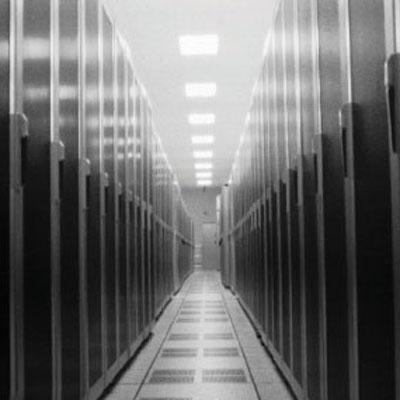
10. Storage Software Growth Plateaus
While the market for purpose-built backup appliances had strong growth, as shown in the most recent quarter of 2012, sales of storage software stagnated, according to analyst firm IDC.
The worldwide storage software market in the second quarter of 2012, which totaled $3.4 billion, rose an anemic 0.9 percent over last year, IDC reported in September. That's a meager $40 million or so.
On the other hand, total worldwide sales of purpose-built backup appliances reached $657 million in the second quarter of 2012, up an impressive 29.8 percent over the $506 million reported in the second quarter of 2011, IDC said.
This does not bode well for the software-only storage vendors who are seeing hardware vendors acquire software developers and eat away at that business. Now we all know why Symantec entered the backup appliance business.
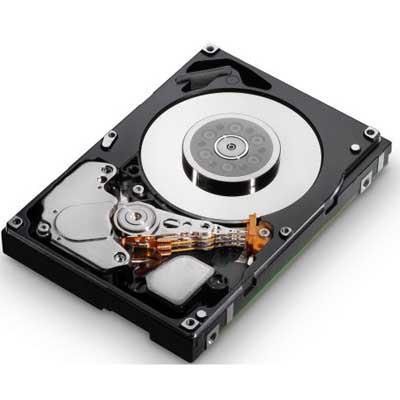
9. Breathing New Life Into Old Tech
Anyone who fretted that the hard drive industry, having been whittled down to three remaining players, had seen the last of technology surprises got a lift when HGST, now a part of Western Digital, unveiled the first-ever helium-filled hard drives.
By replacing the air inside the drives with helium, it is possible to decrease the space between platters, leading to a significant boost in capacity without a massive investment in new technology.
And, lingering illusions that tape is dead got shattered with the late 2012 release of LTO-6 tape drives and cartridges, which provide up to 6.25 TB of compressed data per cartridge and a compressed data transfer speed of up to 400 MB per second.
The release showed that the consortium of LTO tape technology developers remain on track on a road map stretching years into the future, and it let businesses know tape remains the low-cost way to archive data despite the cloud's often-false promise to reduce archiving costs.

8. Buzzword Of The Year: Big Data
With the ability to mine useful information from mounds of unstructured data, much of which is transient in nature, big data became the big buzzword of the storage industry in 2012 despite the fact that big data is not really about storage.
But, the "data" part makes big data a focus of the storage industry. 2012 saw most of the first- and second-tier storage vendors do something about big data, typically announcing a relationship with Hadoop, the open-source developer of big data with the funny elephant logo, or a relationship with a software company that has a relationship with Hadoop.
Others, however, saw an opportunity due to the fact that Hadoop is limited in scalability, replication and many of the other features that are child's play to storage vendors, and so they focused on extending those features to big data.

7. Non-Stop Acquisition Spree
Storage industry acquisitions in 2012 paved the way for big changes in the industry going forward as vendors focused not on growth but on bringing in technology to make them more formidable competitors.
Leading the acquisition spree was Dell's $2.4-billion buy of Quest Software, which gave it a major data protection and data management software offering. Dell also bought data protection vendor AppAssure. HDS and IBM also bought data protection software vendors. Several acquisitions helped beef up cloud storage capabilities, such as Microsoft's buy of StorSimple, a developer of hybrid local and hybrid cloud storage technology for Windows platforms; Persistent Systems' acquisition of the Doyenz's cloud platform business, which focused on disaster recovery-as-a-service; and Carbonite's acquisition of open-source cloud backup technology provider Zmanda. And, in hardware, IBM showed it was ready to compete in flash-based storage with its massive acquisition of flash pioneer Texas Memory Systems.

6. They Showed Us The Money
Economic uncertainties were brushed aside by investors in the storage industry who poured huge sums on capital in both startup and established storage vendors.
One of the biggest recipients was Code 42 Software, developer of the CrashPlan series of consumer, SMB and enterprise cloud storage and disaster recovery offerings. In January, Code 42 pocketed $52.5 million in its first round of venture capital funding.
Following closely behind was old hand Violin Memory, which in April scored a $50-million round, including money from SAP, and hybrid flash and hard drive storage array developer Nimble Storage, which in September closed a $40.7-million round.

5. Movin' On Up(stream)
Several storage vendors that typically focus on the consumer or small business market saw gold in the midrange or entry-enterprise market and moved part of their product line upstream to catch new market opportunities. They included:
* Overland Storage, which in July broke its image as a manufacturer of tape and entry-level storage appliances with the introduction of its first enterprise-class SAN appliance that combines spinning disk and SSD technology wrapped in a enterprise-class software stack.
* Carbonite and Mozy, two well-known providers of online storage backups mainly for consumers and tiny business, both used 2012 to introduce their first solid channel programs to bring their technology to SMB and enterprise clients.
* Drobo and Netgear, two storage appliance vendors traditionally catering to the tiny business customer, both upgraded their line with features catering to midrange and entry-level enterprise users.
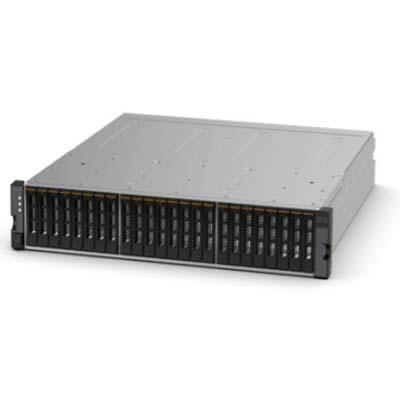
4. Headin' On Down(stream)
It wasn't just the small vendors seeing gold in the midmarket. Several of the storage industry's largest vendors used 2012 to expand their reach into the "S" part of the SMB market, including:
* IBM, which in November introduced the Storwize V3700 (pictured), which includes the same code stack as the company's higher-end Storwize V7000 and its SAN Volume Controller (SVC) storage virtualization technology, as well as such features as replication, thin provisioning, a self-optimized flash tier and cloud access, all in an array that lists starting at under $11,000.
* NetApp in June expanded its reach into the SMB market with the release of a new sub-$8,000 storage unified storage array with optional SSD pooling and other features and services consistent with the vendor's full product line.
* HP in December moved to bring its high-end 3PAR family down-market to compete against the EMC VNX family by introducing the HP 3PAR StoreServe 7400 with a starting price of about $25,000.
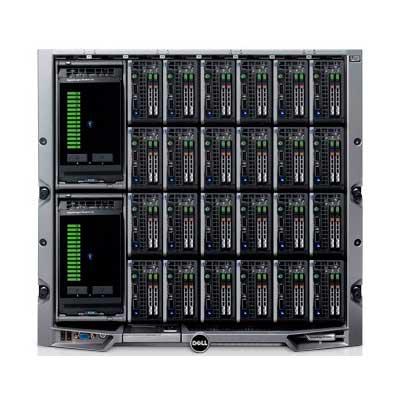
3. Converged Infrastructure Finally Went Wide
Prior to 2012, Cisco and NetApp or EMC, both in partnership with Cisco, as well as HP on a stand-alone basis, were the primary pushers of the idea of converged infrastructure, which packages and manages server, storage and networking technology in a single solution, whether it is built-to-order like a VCE Vblock or assembled in the field like a FlexPod or VSPEX.
For 2012, that changed as all the other major storage and server vendors joined the fray, including Dell's Active Infrastructure and Converged Blade Data Center (pictured) solutions, the Hitachi Unified Compute Platform from HDS, and IBM's PureSystems.
The possibility of getting a lock on the most important part of a customer's data center and cloud strategy also attracted a number of startups, such as Simplivity and its OmniCube single all-in-one appliance, and the commodity hardware approach of Yottabyte.

2. Flash Showed It Wasn't A Flash In The Pan
The storage industry's use of flash memory advanced significantly in 2012, as all the major and many of the secondary vendors unveiled their strategies and products. The years also saw a staggering array of new options for using flash memory to increase storage performance, including:
* Several startup vendors introduced all-flash storage arrays in which the hard drives have been replaced by either SSDs or flash memory modules for ultra-high-performance applications.
* PCIe flash modules for servers, which were introduced last year as a way to increase application performance, got a big boost from a couple of vendors that introduced ways to tie modules from multiple servers to share the cache and applications.
* Network-based flash-based cache devices, which allow multiple servers or storage devices to share flash-based storage across a LAN, also hit the market.
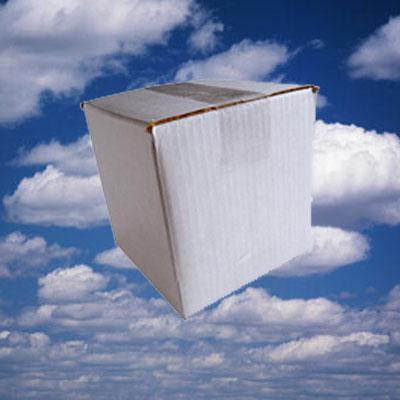
1. The Public Storage Cloud Starts To Grow Up
While traditional storage vendors jostled for attention as the supplier of the best platform on which to base public or private storage clouds, Amazon Web Services made significant upgrades to its ability to provide storage as a service:
* AWS in August introduced Glacier, a service focused on long-term data retention. Data in Glacier can be stored for as little as 1 cent per GB per month, but access to that data is slow, and there are penalties for deleting it quickly or accessing more than 5 percent of it.
* At the other extreme was AWS's new Amazon Elastic Compute Cloud instance called High I/O, which provides an SSD front-end to the AWS service for applications requiring high-speed, low-latency access to data in the cloud.
* AWS and NetApp partnered to make NetApp storage arrays inside Amazon-certified co-lo centers work with EC2 and S3 services via AWS Direct Connect.